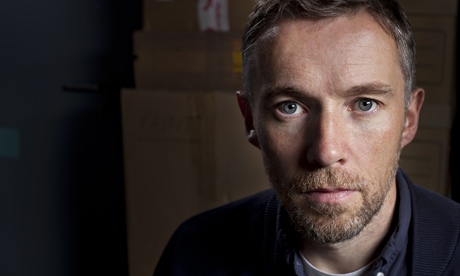
Duncan Campbell has produced the most consistently interesting body of work of all four shortlisted artists for this year’s Turner prize. It is no wonder he has won. Even so, his film It for Others is overlong, over-complicated, and with a voice-over so didactic in tone it easily alienates viewers.
No one likes to be preached at or lectured to, even though Campbell wants the meaning of his works to be open ended, It for Others can seem more like an academic Powerpoint lecture than an artwork, even though I take its tone as an almost poetic conceit, an almost theatrical affectation. But where’s the fun in it, for those who sit through its 54 long minutes? I struggled to stay the course in the Scottish Pavilion at the last Venice Biennale, and the benches at Tate Britain encourage an early exit. That said it has stayed with me – especially the gag about Neil MacGregor’s use of the British Museum’s Benin Bronzes in his radio series and exhibition A History of the World in 100 Objects. There also a captivating section in which the Michael Clark Company dance an interpretation of the evolution of money, though budding economists might miss exactly how this takes place.
Campbell’s earlier films, on Irish politician Bernadette Devlin McAliskey and on John DeLorean’s ill-fated attempt to build his gull-wing car in Northern Ireland, were as much about how the media portrayed them as they as they were portraits of their protagonists themselves. Similarly, his short film Sigmar, that opens his Turner prize presentation, isn’t so much about German painter Sigmar Polke as it is about Campbell’s experience of looking at his work, and imagining what Polke’s drawings would say if they could speak. They’d just shout, “Nein!”
All four artists in this year’s exhibition are concerned as much with ideas and stories and language as they are with images and objects. Tris Vonna-Michell’s weirdly rambling, surging, and digressive autobiographical film-cum-slideshows would work better as radio or as a kind of stand-up monologue, in the manner of the late Spalding Gray. Vonna-Michell really has got something. I just wish he’d get on with it.
Nor did James Richards do as much as he could with his subject matter – especially the officially censored illustrations in art books he found in a Japanese public library, with their pedantically scratched-out sexual parts. Ciara Phillips just wasn’t ready for Turner prize exposure, with her games with orthography, mistellings and misprintings. There wasn’t enough heft to her installation, which didn’t do much more than decorate the space with a re-worked mélange of earlier projects.
Lots of really good artists don’t win the Turner Prize. Some lousy ones do. It felt to me that the judges wanted to produce an interesting group show rather than to present the most vital things going on now. I fully expected Ed Atkins, Helen Marten or Heather Phillipson to make the shortlist. They didn’t. Maybe next time.

